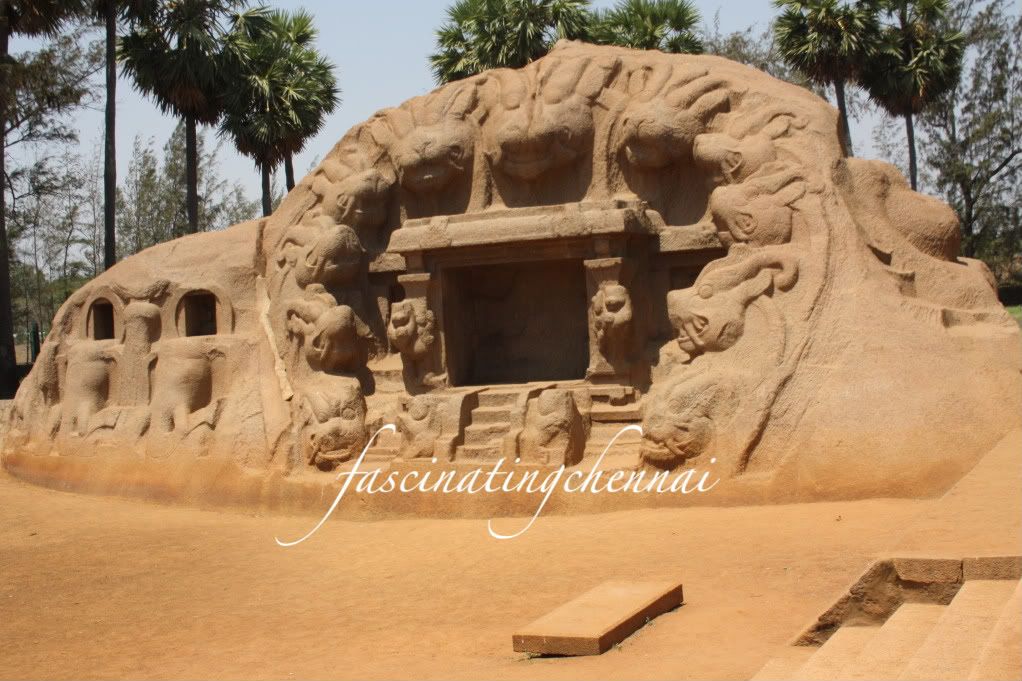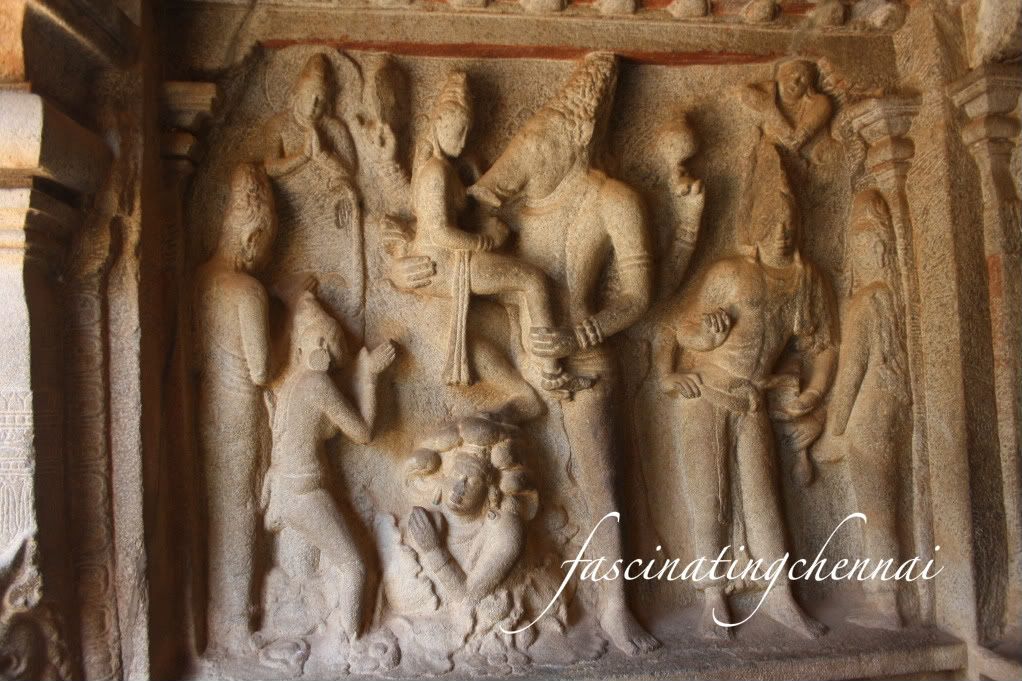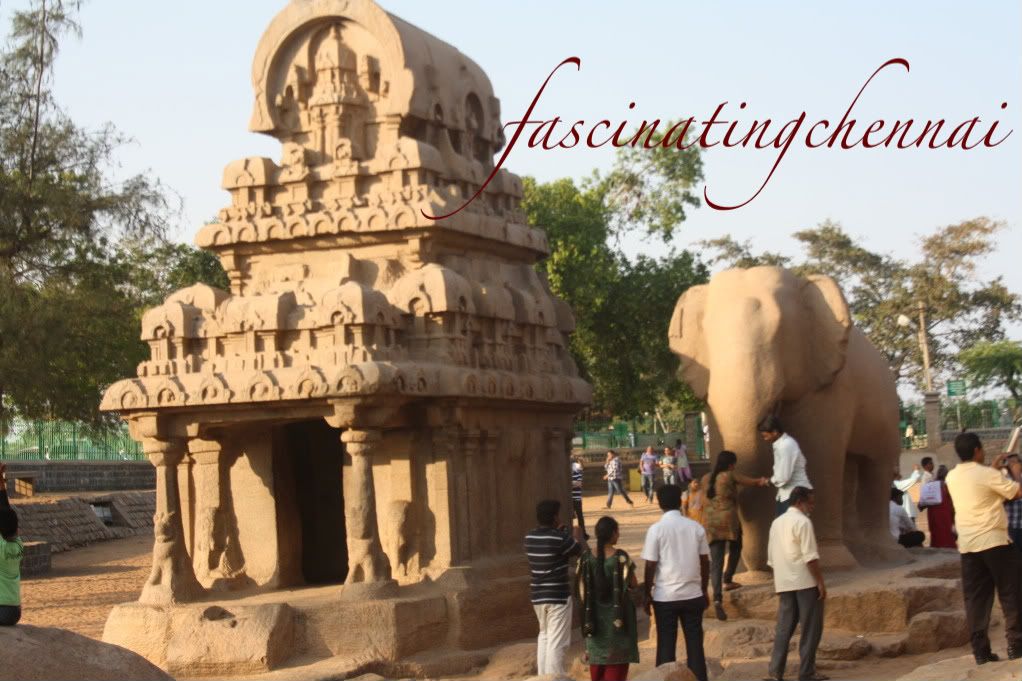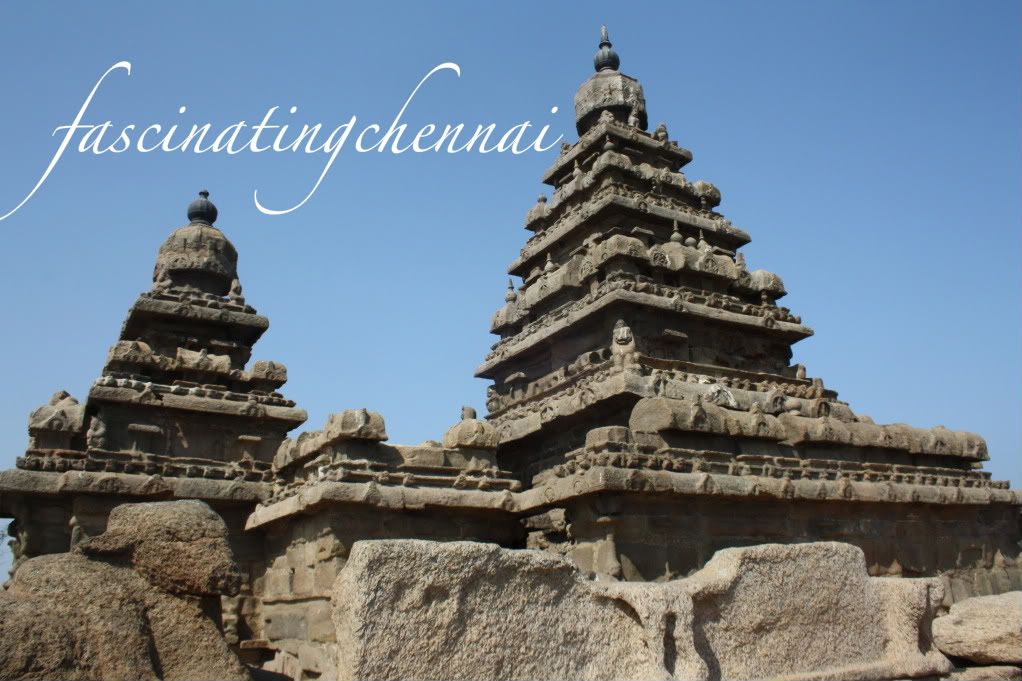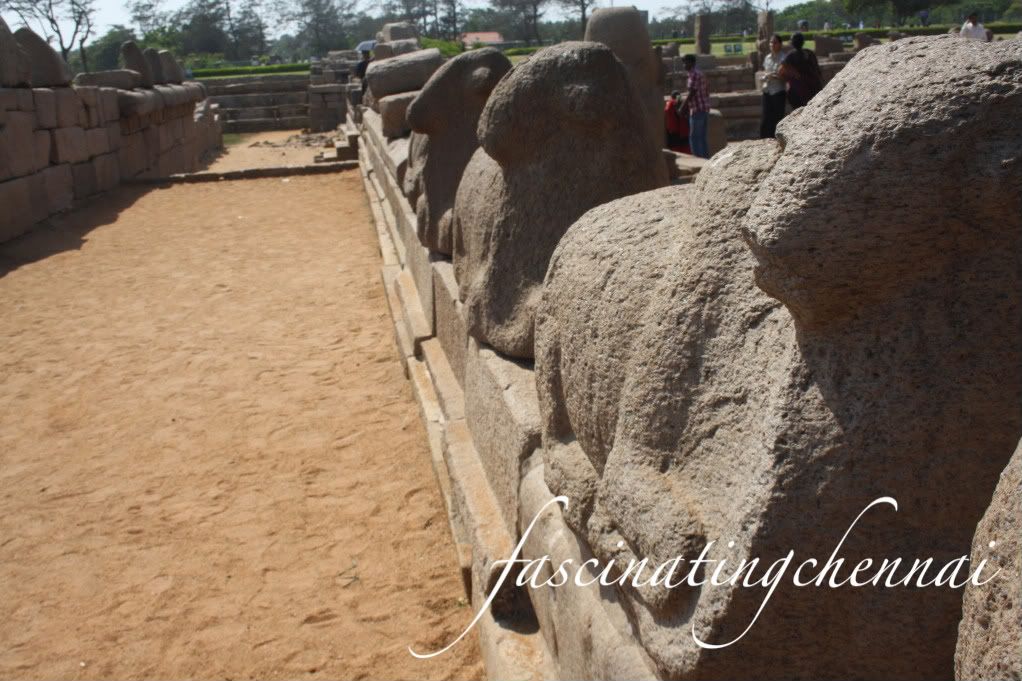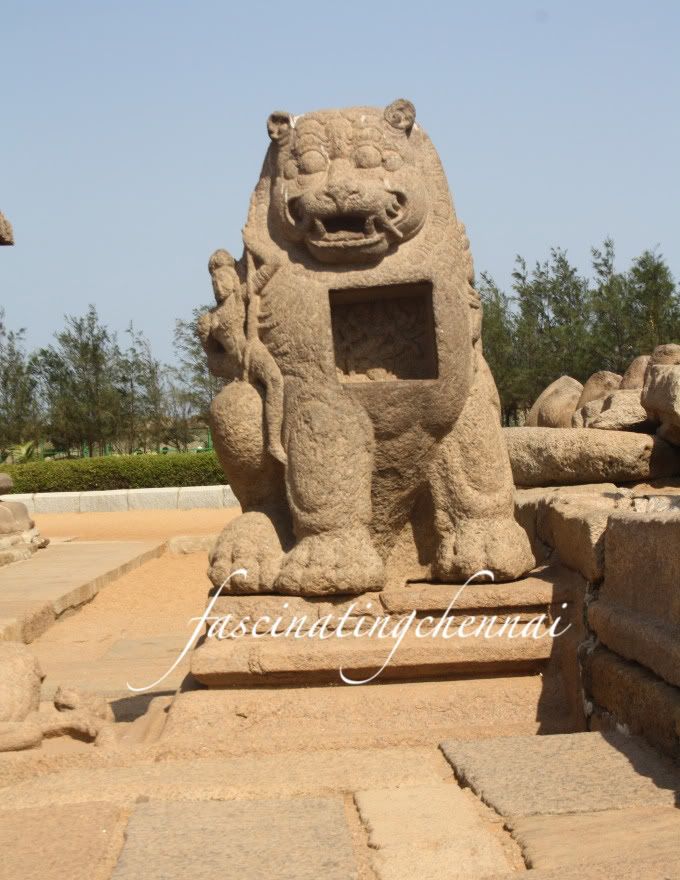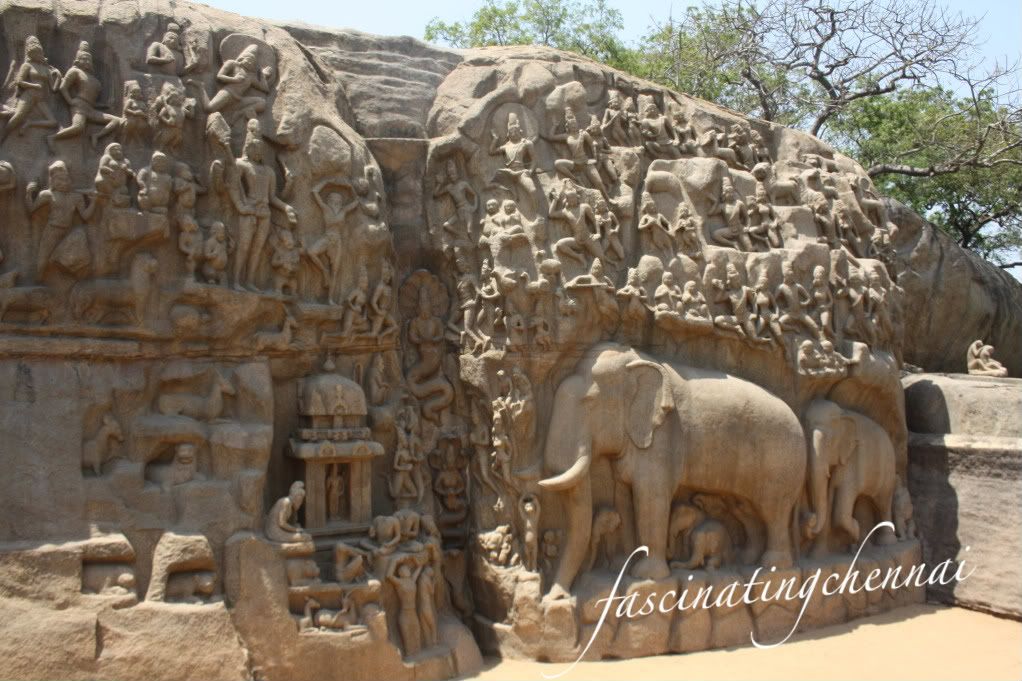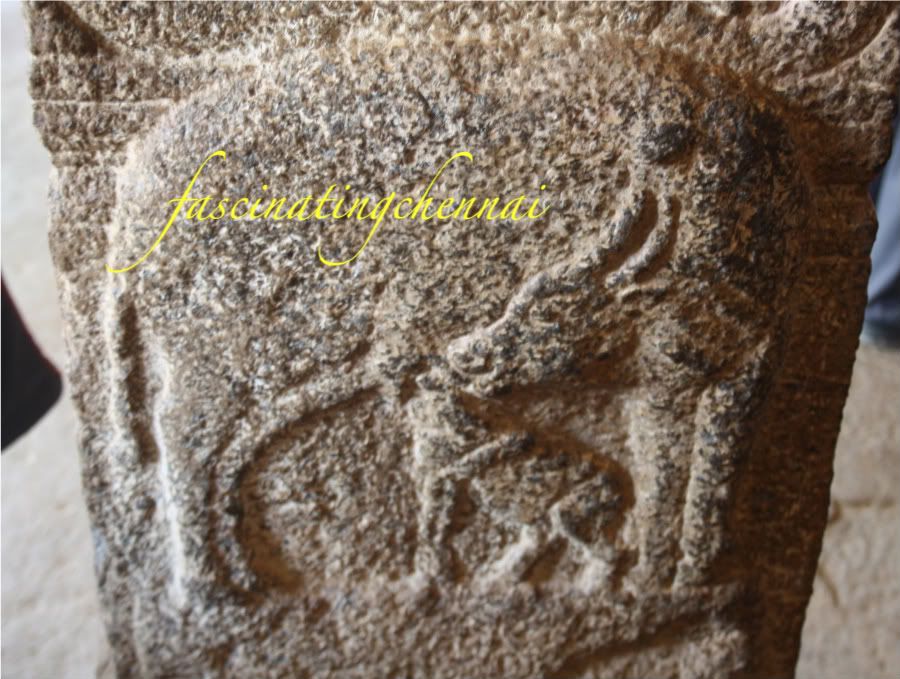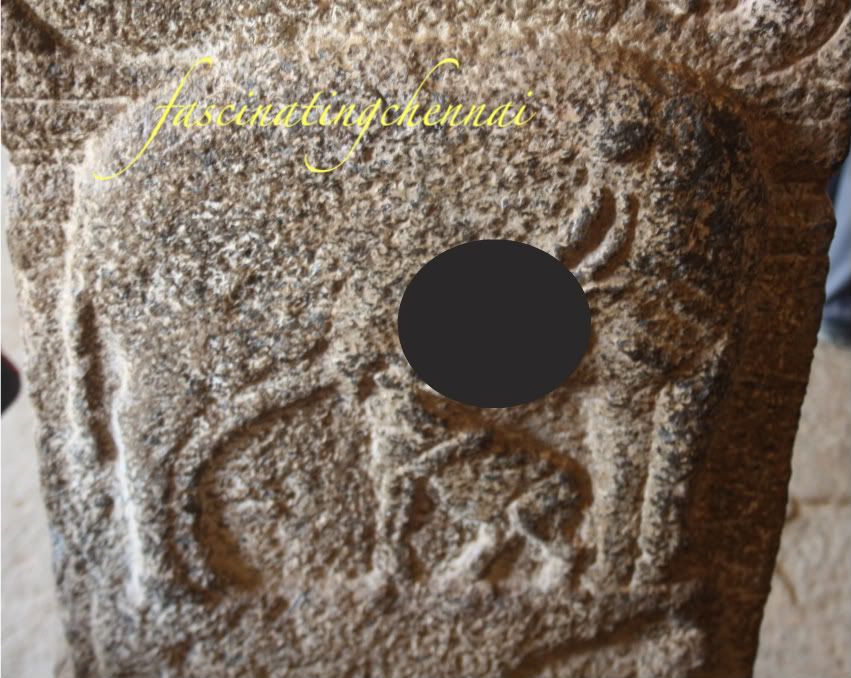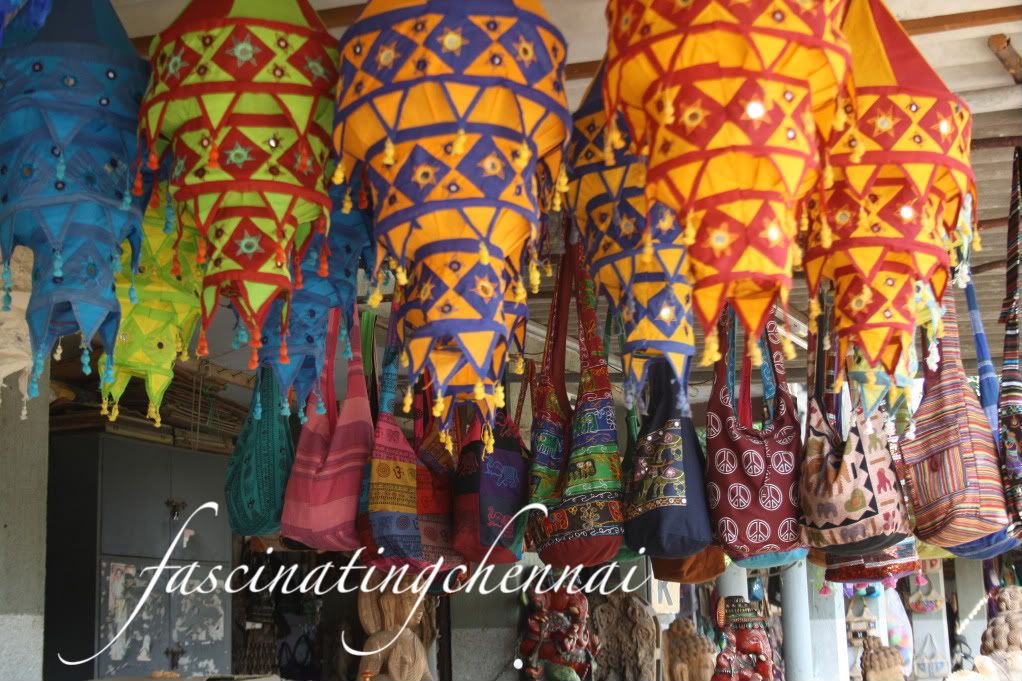Mahabaliburam, initially called as '
Thiru kadal puram', a place along the sea shore, was later named as ‘
Maha - bali - puram' apparently denoting the sacrifices that took place before any embarkments the kings took on. It was later changed to '
Ma-malla-puram' after the warriors of the narashiman era. Tiger cave, Arjunas penance, Sea Shore Temple, are few of the many, rock sculptures that will enthral the visitors. It’s a place that is known for its sculptures on rocks depicting various styles of architecture and many incredible works that will not fail to capture an artists attention. Apart from temples, rock cut mandapams were sculpted, apparently for meditation purpose. The temple architecture stands as a witness that this place has been an important port, as the pillars, lion faces, and the inverted boat shaped tops bears a close resemblence to the architecture from Rome and East Asia. It also happens to be the second largest rock cut temple to be built, next to, the one in Angkorwat and you can see a lot of similarities in their architecture as well. If visiting mamallapuram go informed about the place, as that will give a better understanding of the sculptures and the importance associated with it.
These informations given here is based on what my guide gave us when we visited Mamallapuram and sometimes it differs from person to person and the information given here is just a pinch from what it actually holds to be told.
Other than the beholding experience of visiting one of a kind monument that stands as an example of the extraordinary artistic ability of south indians, it is very upsetting to note that the people employed there, like the person who issues ticket or the entrance guard is not a south Indian and who proudly says I don’t speak tamil, I speak only hindi or english. I don’t think a tamilian will be able to say the same, if he were to be employed in Mumbai or Delhi. Should, all the people who come far and wide from all over Tamil nadu know to speak hindi and english to get help and seek entry from an hindi speaking guard? I have no grudge against hindi speaking people or north Indians, but being in Tamilnadu, visiting a monument that speaks about tamil architecture, I wish to approach a person who understands my language for any clarifications and I guess that is what people from Tamil nadu would wish too.
Tiger cave:
There’s a temple, large rocks like this one below and a few more that were exposed during the recent Tsunami.
Temple
This place was actually used as a stage by the king to sit and watch dance performances.
The back side of the tiger faced mandapam, which looks like a gorilla. I wonder if it was intentionally carved out to look like a gorilla or it's just my imagination.
The huge stone that stands precariously perched on the rock bed, stands strong that way for many years without a movement.
The three Gods, G- generator - Brahma, O- Operator - Vishnu, D- Destroyer - Shiva, all carved out from a single rock.
The figures of the elephant calf intentionally damaged during the war.
Tree that has grown out of a rock
An incomplete temple that was built in vijayanagar style
Apparently this was the king’s bed that he used for resting and right in front is a pool.
Varaha Mandapam
Godess Lakshmi in the centre, apparently the belief that touching her legs will ensure continuous flow of money has led to the darkening of the sculpture. Those tourists!
Light house can be seen in between the rocks.
Five Rathas
I and II Rathas
III Ratha
IV Ratha
and the V Ratha
Shore Temple
Sculpture in a damaged condition inside the temple.
Walls eroded by the salty breeze
Arjuna’s penance
This rock sculpture depicts the story of Arjuna’s penance. As the story goes, Arjuna decides to penance seeking the weapon in Lord Shiva’s hand to fight the demons and so does many others who join him in his penance, which he finally does and wins the war and brings peace. There are so many minute details, that may go unnoticed unless you are told. At the far end of the of the picture there’s a sculpture of a two monkeys busy grooming.
This sculpture is done in two segments, with the centre carved out to allow the flow of water, which is blocked now to preserve the sculptures.
Pink arrow points to starved Arjuna in the state of penance and the white arrow points to Lord shiva with the weapon.
Many other people who joined the penance includes headless people and on a teasing note there’s also a cat penancing with many rats by its side, making use of the situation. The pink arrow points to the cat, the red arrow points the rats, the blue arrow points to the headless people and the white points to a pair of deers that impressed former Prime minister Indira Gandhi during her visit here and she ordered the picture of the two deers to be imprinted in 10 rupee note of the Indian currency( It can been seen in the old 10 rupee note).
The meditation room that was used by the kings
 Krishna Mandapam:
Krishna Mandapam:
It’s a portrayal of Krishna holding the roof held high above and protecting his people. The scuptures themselves are nothing but a village scene immortalised in these rocks, with the daily chores of the people and their life brought alive by the skilful work of the sculptor.
One good example that reveals the talent of the South Indian scuptor is the bull at the far end of the picture on the left side. There’s a small gap behind the forelimb of the bull that one can actually put through a hand. Beautifully carved out of the wall yet attached to the figure, complete with a smooth finish, it is not only amazing but a very difficult task to perform.
One more marvel on a stone that looks like a single figure, but actually has two figures. On the first look it looks like a cow and its calf, if the head of the cow is marred, you can see an elephant and its calf.
Ganesh Ratham that reveals three different types of architecture, with the roof top that looks like an inverted boat, step by step vimana and pillars.
This place is called as Krishna’s kitchen and it is believed to be used for cooking purpose, as the marks on the rock supports the idea.
The ever attracting Beach
Shopping time
This little guy may look colourful and pretty, but it was very aggressive, may be because it was chained and suffocating wearing all that silly stuff and tortured to perform for the tourists!































